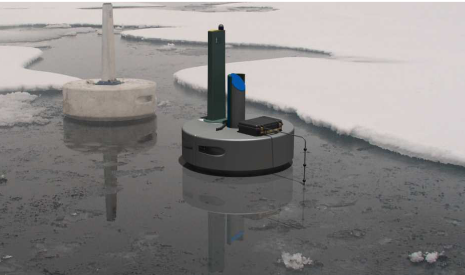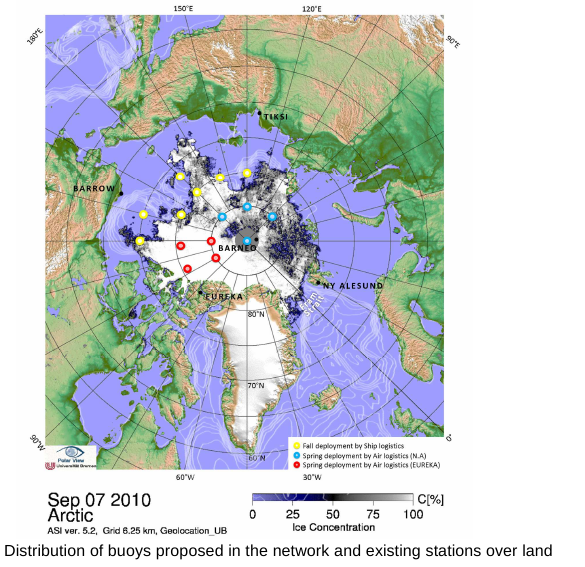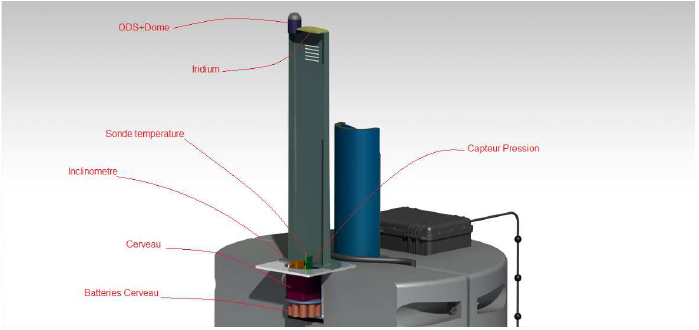IAOOS: buoys in arctic

Context: the warming threat
The most conspicuous manifestations of the current climate warming are found in the Arctic. The warming trend in the Arctic is almost twice as large as the global average in recent decades (this is known as Arctic amplification. The contributing factors suggested are:
- changes in cloud cover
- increases in atmospheric water vapour,
- more atmospheric heat transport from lower latitudes and declining sea ice
The extreme reduction of the Arctic sea-ice cover at the end of the summer has a huge impact on the Earth radiative budget and fluxes at the air-surface interface. It is responsible for:
- a warming of the upper ocean and of the lower atmosphere,
- a change of the atmospheric circulation (polar vortex and storm tracks),
- an increase of cold air outbreaks enhancing heat flux release and low cloud formation and sudden stratospheric warming events,
- an acceleration of Greenland ice melting and sea level rise and an increase of permafrost thawing releasing large amount of greenhouse gases into the atmosphere.
Shifts in wind regime, accelerating sea-ice motion, increasing sea-ice deformation, fracturing and ridging, producing more open waters, diminishing the albedo and increasing absorption of solar radiation by the upper ocean also contribute to amplified sea-ice changes in the Arctic. To interpret the Arctic amplification, pan-Arctic measurements in the water column, se-ice and overlying atmosphere are needed.
Objectives
The main objective of the IAOOS project is to provide and to maintain an integrated observing system over the Arctic Ocean to collect synoptic and near real time information related to the state of the upper ocean, the lower atmosphere and the Arctic sea-ice. These data are complementary to satellite observations and models.
ODS specifics objectives The equipment proposed for the atmosphere is based on a combination of satellite and ground based observations:

Due to a frequent occurrence of mixed phase clouds in the
Arctic (from 25% of the time in winter to 95% of the time in summer) and its large impact on
the surface heat budget, atmospheric observations from the surface are needed since the
cloud structure cannot be fully observed from space. It is the objective of IAOOS to perform
atmospheric observations over the central Arctic Ocean where no station has been
implemented so far, by using autonomous and unattended microlidars and optical depth
sensors (ODS).
During the Polarcat project, it was shown that aerosol layers are frequently observed in the
Arctic mid troposphere from early spring to summer. Even though their optical depth is
moderate, they still contribute significantly to the radiative budget. These layers are not easily
detectable by spaceborne instruments and would benefit from ground-based observations by
micro lidars and optical depth sensors.
Therefore main objectives of ODS artics are the measure of:
- aérosols
- clouds
- PSC,
